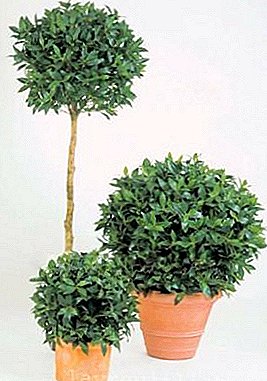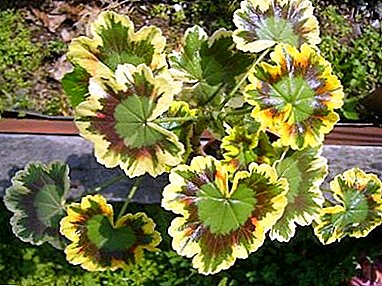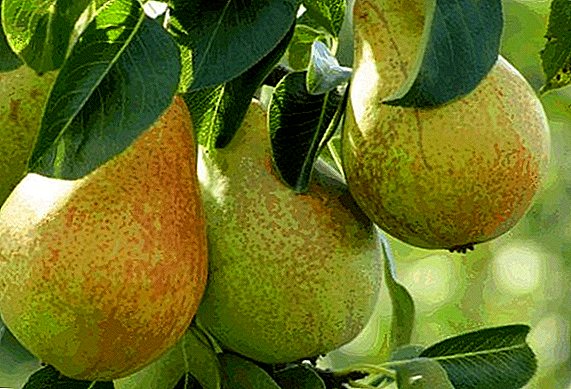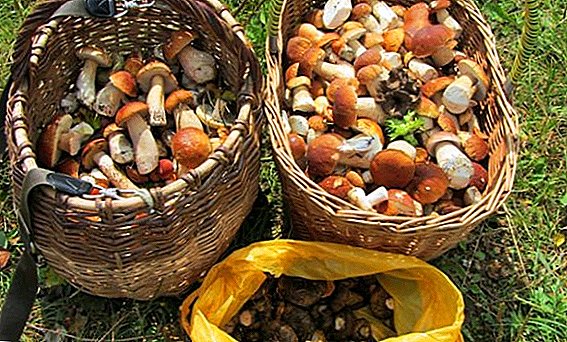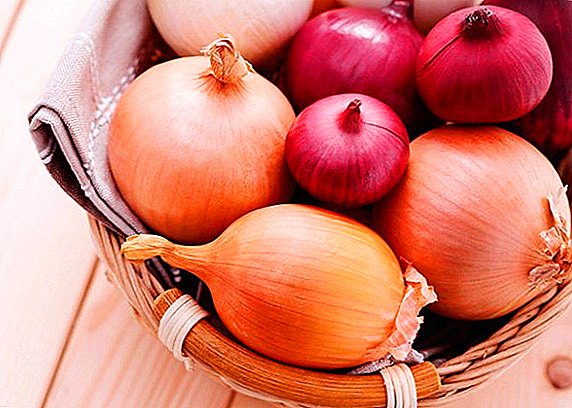 In the spring of onions can be planted not only on the feather, but also on the head. On the one hand, it seems that there is no easier process: to plug a small head into the ground, and by the fall to harvest a large crop.
In the spring of onions can be planted not only on the feather, but also on the head. On the one hand, it seems that there is no easier process: to plug a small head into the ground, and by the fall to harvest a large crop.
In fact, to get the expected result, you need to know some features of growing vegetables in a similar way.
How to choose a favorable time
First of all, you need to know in which month they put onions on the head. The yield and the fate of planting material depends on it.
Weather conditions of the region
It is on them that one must be oriented in planting a vegetable crop, since there are simply no strict dates. They largely depend on the region, the weather conditions and the selected onion varieties. The only important thing is that the soil is warm enough - from 12 ° C and more. But the approximate dates can still be called the last decade of April and the beginning of May.
Did you know? You can still sow onions with seeds, but then by the end of summer only small onion will ripen, which can be planted on the head only next spring. It turns out that high-grade onions can be obtained from seeds after a year and a half.

By lunar calendar
Prompt when you can plant onions in the spring on the head, can Lunar calendar gardener. According to him the ideal periods for the bow:
- May 10-20;
- June 15-19;
- July 13-16;
- August 10-13;
- April 25-26;
- May, 23rd;
- 3 July;
- July 31;
- August 1;
- August 27-28.
Planted on these days, the plant produces large bulbs and juicy greens. Experienced gardeners are guided by the bird cherry tree: when leaves begin to unfold in her spring, it is time to plant onions.
Did you know? Onions by weight can reach half a kilogram. Medium bulbs weigh about 100 g, and small ones - 50 g. It all depends on the natural conditions, variety, watering.

Optimal conditions for growing
Having understood, when spring planting of onions is carried out on the head, it is necessary to choose a suitable place for vegetable culture.
Soil for planting
This plant requires fertile, loose soil with low acidity. Excellent vegetable grows on loams, which are well breathable and moisture. When choosing a place, you should pay attention to the predecessor plants.
Representative onion bulbs are also: leeks, onions, shallots, chives, onions, Indian onions, Viper, decorative onions.
It is best to plant a vegetable where previously grew cucumbers, tomatoes, potatoes or cabbage. An ideal predecessor is rye, which loosens the soil with its roots and enriches it with necessary substances.
Also consider which vegetables will grow next. The perfect neighbor is carrots. She dares onion flies, while onions will be the prevention of carrot flies.

Important! On the former place onions can be planted only after three years.
The soil for planting should be prepared in the fall. It is dug up with well-swollen manure and mineral fertilizer with superphosphate (100 g of fertilizer per 5 kg of manure). Manure can be replaced by compost. They dig up the soil to the depth of the spade bayonet.
In spring, the soil is fertilized again with mineral fertilizers, after which they are deeply loosened. Then, a week before planting, wood ash (one liter jar per square meter) is added to it.
Important! It is better to plant all the necessary fertilizers into the soil immediately before planting, so that you do not water the beds with the planted plant.Right before planting, the bed should be well leveled so that water does not accumulate anywhere during irrigation.

Lighting
When sowing onions on the head, choose well-lit areas. In principle, all bulbous plants are difficult to grow in the shade, as they like direct sunlight. Without them, onions, if they grow, will be very small.
Depth and landing pattern
The next important question is according to which scheme to plant the bulbs and to what depth to deepen them.
Onions can also be grown in the Chinese way, on the windowsill and for the winter (winter).
Preparation of planting material
The first thing that needs to be done with planting material is to touch it, throwing out dry and rotten bulbs, and calibrate the remaining ones. The term of its planting depends on the size of the bulbs, so it is sorted in this way:
- less than a centimeter in diameter are planted in a greenhouse or in mid-May in open ground;
- from 1 to 2 cm in diameter can be planted approximately two weeks after small ones (as a rule, this is the main part of the landing);
- large ones, with a diameter of 3 cm and more, are the last to land, so that they do not go early in the arrow. You can land them separately on the greens.

Selected material must be disinfected. To do this, make a weak solution of potassium permanganate and maintain planting material in it for about 15 minutes.
If during the cultivation of the planting in the garden, diseases were observed, pests multiplied, it should be soaked in ash solution (a tablespoon per liter of water), but it should be kept for about five minutes in this product.
Important! After soaking the onion should be immediately planted in the beds. Therefore, all preparatory procedures should be carried out immediately before disembarking.When storing onions in a cellar or other cold place, it must be taken a couple of weeks before planting and held at room temperature. If you plant a too cold onion, it will rot in the soil.

Planting onions on the head in the spring
Before disembarking it is necessary to mark the beds. A distance of 12 cm is maintained between them. The distance between the bulbs themselves depends on the size of the heads. So, between large maintain a distance of 10-12 cm, medium - 8-10 cm, small - 6-8 cm.
Do not submerge the seams too deeply. When it takes root, the bulb will draw even deeper into the ground, so the shoots will have to wait a long time, and the harvest will be small and weak. It is enough to bury them a little in the ground and sprinkle a little on top. After planting, the vegetable is watered and mulched with straw or sawdust. This will help the moisture to stay in the ground while the bulbs germinate.

A few tips on growing
To get the expected yield, gardeners recommend following these rules:
- Watering landings spend only the first six weeks - about once a week. When the bulbs are ripe, it must be abandoned. If under severe drought the onion feathers lose color, bend, whiten slightly at the ends, you can water it a little.
- Vegetable may be affected by rust, cervical rot, black mold and other diseases. Therefore, for prevention, it is recommended to spray it with a solution of copper sulphate, when the feathers are approximately 15 cm in length. To prepare the solution, take half a teaspoon of copper sulfate, half a tablespoon of liquid laundry soap and dilute them in five liters of water.
- Onions must be fertilized three times during the growing season. The first time feeding is applied to the ground before planting, the second - when the feathers reach 10 cm, and the third - when the onion reaches the size of a walnut.


